Today we will talk about everything related to espresso crema (you know, the foam on top of espresso).
We all know that a good espresso is like a warm hug from a long-lost lover.
And what’s the secret ingredient that makes it so magical? You guessed it – crema!
That creamy layer of foam on top isn’t just a pretty face, though. It’s the key to unlocking the full potential of your espresso shot.
So, join me as we uncover the mysteries of crema. We’ll explore the good, the bad, and the frothy, and give you some insider tips and troubleshooting ideas on how to perfect your crema game.
- What Is the Perfect Crema?
- What is Espresso Crema Color?
- How Much Crema Should Espresso Have?
- Factors That Affect Crema Quality (My Personal Espresso Crema Tips)
- What Are The Best Coffee Beans For Crema?
- Espresso Crema Troubleshooting (Fix Your Espresso’s Foamy Fails)
- Some Questions You May Still Have
- My Final Thoughts: Is Crema Really That Important?
What Is the Perfect Crema?
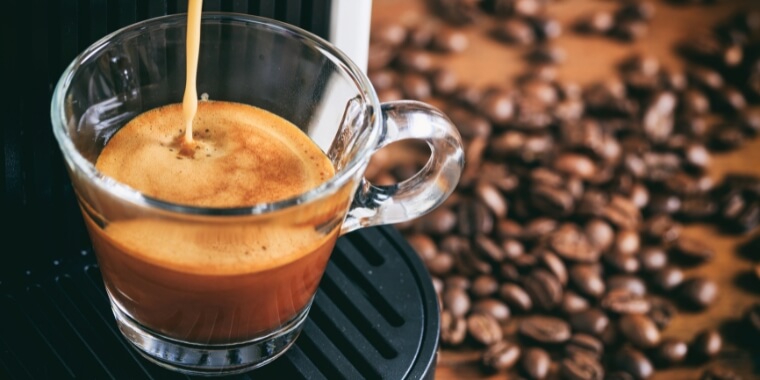
According to Ernesto Illy and Luciano Navarini’s research, crema is the result of a beautiful marriage between coffee oils and carbon dioxide (CO2) that are naturally present in coffee beans.
During the espresso extraction process, the water gets all hot and bothered and dissolves the CO2 gas from the coffee beans.
This creates a frothy reaction with the coffee oils, resulting in a dreamy layer of foam on top of your espresso shot.
Now, let’s talk about what makes a perfect crema.
We’re talking thickness, texture, and color! It should be thick enough to sit on top of your shot for around 2 minutes before slowly blending in with the coffee, like a sultry siren luring you into her depths.
The texture should be as smooth as butter, with no visible bubbles or holes to ruin the mood. And the color should be tantalizing golden brown, the color of perfection in the espresso world.
For those in a hurry, here’s a brief summary:
Espresso crema is formed from a natural emulsion of coffee oils and CO2 during the espresso extraction process. Perfect crema is characterized by its thickness, texture, and color.
What is Espresso Crema Color?
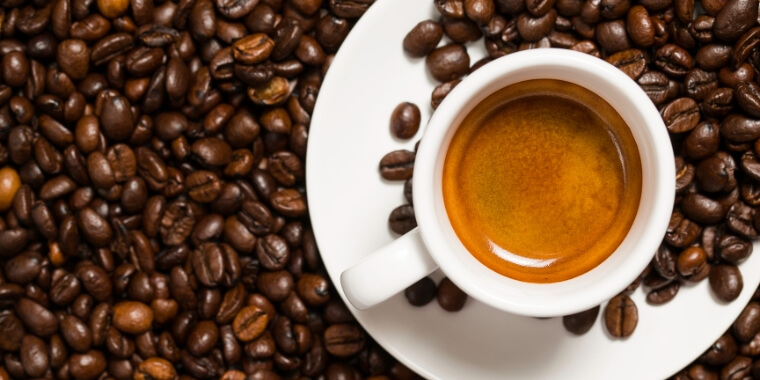
If you ask me, a perfect crema color should be a gorgeous, sultry golden brown – the color of sunshine on a lazy Sunday morning.
But when it comes to the perfect crema color, it’s not as clear-cut as you might think.
I did some extensive research (ok, I asked a few baristas), and here’s what I found:
Some baristas said it should be dark brown like a devil’s smile, while others said it should be a tantalizing hazel brown.
And then there were those who said it should be light brown like a fresh batch of cookies or even caramel like a sweet treat.
Anyway, have a look at the results yourself:
| Perfect espresso crema color | % of answers |
| Golden brown | 32% |
| Dark brown | 28% |
| Hazel brown | 21% |
| Light brown | 11% |
| Caramel | 9% |
But let’s face it, the perfect crema color is like a chameleon – always changing and adapting to its surroundings.
It can vary depending on the coffee beans used, the roast level, and even the brewing conditions.
For those in a hurry, here’s a brief summary:
A golden-brown color is generally considered to be the holy grail of espresso crema colors.
How Much Crema Should Espresso Have?
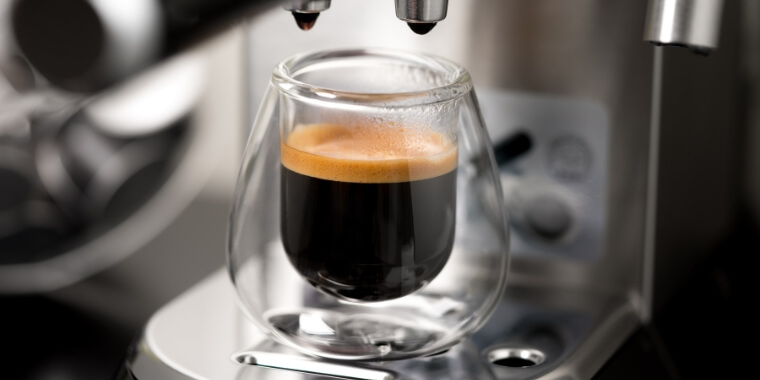
Generally speaking, a well-made espresso should have a lovely layer of crema that’s about 1/8 to 1/10 of the shot – not too much, not too little, just the perfect amount.
But that’s not all. The crema should also be thick enough to sit on top of your shot for a good two minutes, like a loyal companion who’s always got your back.
After two minutes, the crema should slowly blend in with the coffee.
The amount of crema can vary depending on a whole host of factors, including the type of coffee beans used, the roast level, the brewing temperature and pressure, and the grind size.
It’s like trying to solve a Rubik’s Cube, but with coffee. But hey, that’s what makes coffee so fascinating, right? The endless possibilities, the infinite combinations, the boundless joy.
For those in a hurry, here’s a brief summary:
A well-made espresso should have a layer of crema that’s about 1/8 to 1/10 of the shot, thick enough to sit on top of the shot for two minutes.
The amount of crema can vary depending on factors such as coffee beans, roast level, brewing temperature, pressure, and grind size.
Factors That Affect Crema Quality (My Personal Espresso Crema Tips)
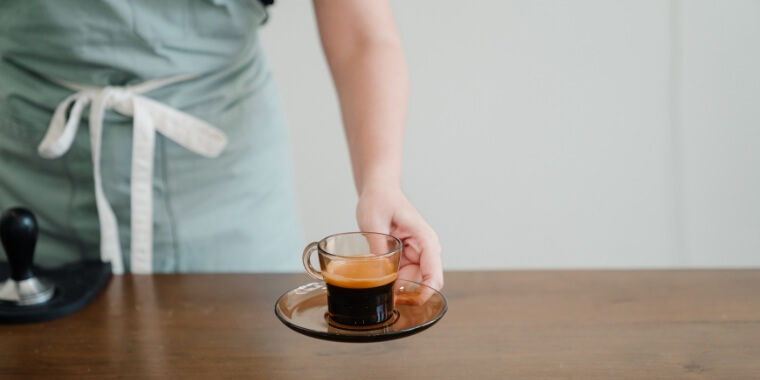
If you want to achieve the perfect crema, you need to pay attention to a few key factors.
Coffee beans
First and foremost, the quality and type of coffee beans you use can make all the difference.
Freshly roasted, high-quality beans with a good oil content are your best bet for producing that dreamy crema we all crave.
Roast level
The roast level of your beans can also affect the color and thickness of your crema.
Darker roasts can give you a thicker, darker crema, while lighter roasts can produce a thinner, lighter crema.
Grind size
And let’s not forget about the grind size, my friends. A finer grind can produce a thicker and more intense crema, while a coarser grind can result in a weaker, thinner crema. It’s all about finding that sweet spot.
Tamping
Now, let’s talk about tamping. If you over-tamp your coffee grounds, you can end up with a tight pack and thin crema.
But if you under-tamp, you may end up with uneven extraction and weak crema.
It’s a delicate dance, my friends.
Extraction time is also key.
If there’s one thing Italians know about, it’s espresso. They practically invented the stuff.
And when it comes to getting that perfect crema, they’ve got it down to a science.
A longer extraction time can give you more crema, while a shorter extraction time can result in less crema. It’s all about finding that balance, baby.
According to the Instituto Nazionale Espresso Italiano, the perfect extraction time is right around 25 seconds.
Brewing temperature and pressure
And last but certainly not least, brewing temperature and pressure are critical to achieving the perfect crema.
Optimal temperature and pressure can give you that thick, creamy crema with good texture and flavor.
But if your temperature and pressure are too low or too high, you may end up with thin or uneven crema.
For those in a hurry, here’s a brief summary:
The quality and type of coffee beans used, roast level, grind size, tamping, extraction time, and brewing temperature and pressure are all key factors that affect crema quality when making espresso.
What Are The Best Coffee Beans For Crema?
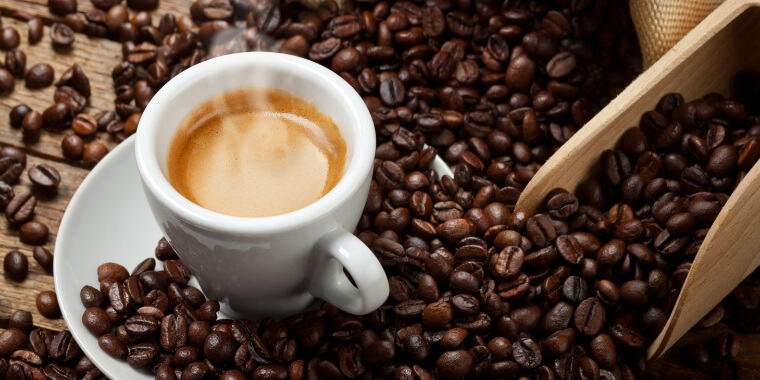
If you are wondering how to get good espresso crema there’s only one solution: use fresh, high-quality beans that are loaded with oil.
Here are some types of coffee beans that I would recommend for crema:
Espresso blends
These are like the Power Rangers of the coffee world – a team of different beans coming together to create a perfect shot. Espresso blends are specifically roasted and blended for use in espresso machines and are designed to give you that thick, creamy crema you crave.
Robusta beans
These bad boys have a higher oil content than Arabica beans, which can give you a thicker and more intense crema. But beware, my friends, because Robusta beans can also have a bitter taste. So, if you’re gonna use Robusta, make sure you mix it with other beans to balance out that flavor.
Dry process coffees
These beans can give you a crema that’s thicker and more intense than other coffee beans, with fruity and complex flavors. But beware, because of their higher oil content, they can be a pain in the butt to grind and may require some adjustments to your espresso machine.
For those in a hurry, here’s a brief summary:
Using fresh, high-quality beans with a good oil content is the key to getting good espresso crema. Espresso blends, Robusta beans, and dry-process coffees are recommended for their ability to produce thick, creamy foam.
Espresso Crema Troubleshooting (Fix Your Espresso’s Foamy Fails)
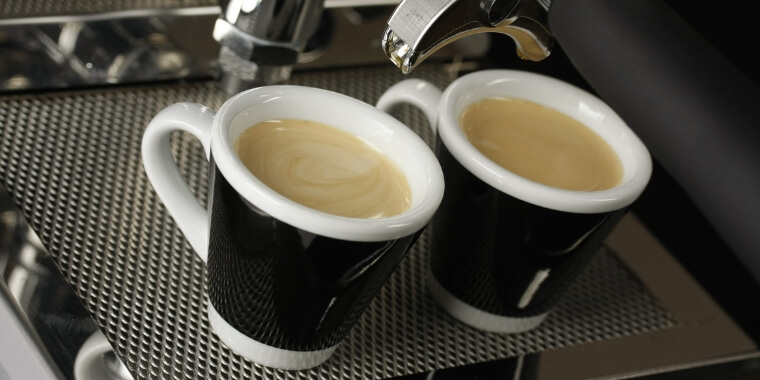
Why does my espresso have no crema?
If your espresso shot is lacking in the crema department, there could be a few reasons why. And no, it’s not because the coffee gods are angry with you (probably).
Reason numero uno: Old or stale coffee beans. If your beans are past their prime, they may not have enough oils to give you that lovely crema. It’s like trying to start a car with no gas – it’s just not gonna happen. So, do yourself a favor and use fresh beans, people.
Reason numero dos: Incorrect grind size. If your grind size is too coarse or too fine, you’re not gonna get the crema of your dreams. It’s like trying to fit a square peg into a round hole. Finding that sweet spot in your grind size is crucial for achieving the crema you crave.
And last but not least, reason numero tres: Poor tamping technique. If you’re not tamping your coffee grounds consistently and evenly, you’re gonna end up with uneven extraction and a sad lack of crema. So, tamp those grounds firmly and evenly.
Now, those are the three most common reasons for a lack of crema, but there are other factors that can come into play too, like brewing temperature and pressure, water quality, and machine issues.
For those in a hurry, here’s a brief summary:
If your espresso lacks crema, it could be due to old/stale coffee beans, incorrect grind size or poor tamping technique, but brewing temperature and pressure, water quality, and machine issues can also play a role.
How To Increase Crema In Espresso?
To increase the crema in your espresso, there are several factors to consider.
First things first, fresh is best. If your beans are older than your great-grandma, you’re not gonna get the crema of your dreams. So, make sure your beans are roasted recently.
Next up, grind baby grind. The finer the grind, the easier it is for water to extract those precious oils and flavors that make up that delicious crema. It’s like giving your coffee a massage – it’s gonna feel good and produce some great results.
But don’t forget about the tamp. A consistent and even tamp in your portafilter is crucial for creating that rich, creamy crema.
And last but not least, let’s talk about water quality. If you’re using water straight from the tap, you’re not doing yourself any favors. Mineral content can inhibit the extraction of coffee oils and flavors, so filter that water.
Follow these tips, and you’ll be on your way to that rich, creamy crema of your dreams.
For those in a hurry, here’s a brief summary:
To increase crema in your espresso, use fresh beans, grind them finely, tamp them consistently, and use filtered water to reduce mineral content.
Why is my espresso crema bitter?
So, here’s the deal – crema is supposed to be a little bit bitter.
But if that crema is too bitter, we’ve got a problem.
And let me tell you, over-extraction is the devil’s work when it comes to crema.
If your extraction time is longer than a Tolstoy novel, or your coffee grounds are finer than sand on a beach, you’re gonna end up with a sad, light-colored crema.
So, do yourself a favor and find that sweet spot in your extraction time and grind size. And that crema? It’s gonna be like a sweet, sweet hug from your coffee.
For those in a hurry, here’s a brief summary:
The crema is supposed to be a little bitter, but if it’s too bitter, it may indicate over-extraction due to longer extraction time or finer coffee grounds, which can lead to a light-colored and overly bitter crema.
Why is my Espresso crema is too light?
If your cream is too light it’s either your coffee is ground too coarsely, or you’re not using enough coffee for the extraction process.
So yeah, if your crema is thinner than a runway model and disappears faster than a magician’s assistant, we’ve got a problem.
The culprit? Under-extraction.
So, let’s fix this problem, shall we? Use a finer grind size and make sure you’re using the right amount of coffee for the extraction process.
It’s like following a recipe – the end result is gonna be so much better. And that crema? It’s gonna be like a beautiful, fluffy cloud on top of your espresso shot.
For those in a hurry, here’s a brief summary:
The lightness and thinness of crema can be caused by under-extraction, which can be fixed by using a finer grind size and the right amount of coffee.
Why is espresso crema too thick?
If your crema is too thick it means that the beans you are using are too fresh.
I know, I know, it’s tempting to use those freshly roasted beans but slow your roll, my friend.
Here’s the deal – when those beans are roasted, they release carbon dioxide gas like a bunch of party balloons. And that gas gets trapped inside those beans like they’re trying to hold their breath or something.
But, just like that balloon slowly deflates over time, that gas needs to escape too.
And if it doesn’t? We’ve got issues.
So, give your beans some space. Let them sit for a few days, or even a week before you use them for espresso.
For those in a hurry, here’s a brief summary:
If the crema on coffee is too thick, it could be because the beans used are too fresh and have not had time to release the carbon dioxide gas produced during roasting, so it’s recommended to wait a few days or even a week before using freshly roasted beans to allow the gas to escape.
Some Questions You May Still Have
What Is The Foam On Top Of Coffee Called?
The foam on top of coffee is called “froth” or “crema”.
The term “crema” is typically used in the context of espresso, while “froth” can be used to describe the foam that forms on top of other coffee drinks, such as cappuccinos, lattes, and macchiatos.
My Final Thoughts: Is Crema Really That Important?
Some people like James Hoffman say that crema is like that one friend who’s all style but no substance – “beautiful but doesn’t taste very good”, like a cake made of cardboard.
In my opinion, while the crema is like the cherry on top of your ice cream, it’s the taste, aroma, and balance of your espresso shot that really matters – like the ice cream itself.

